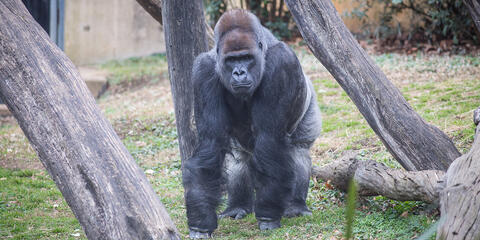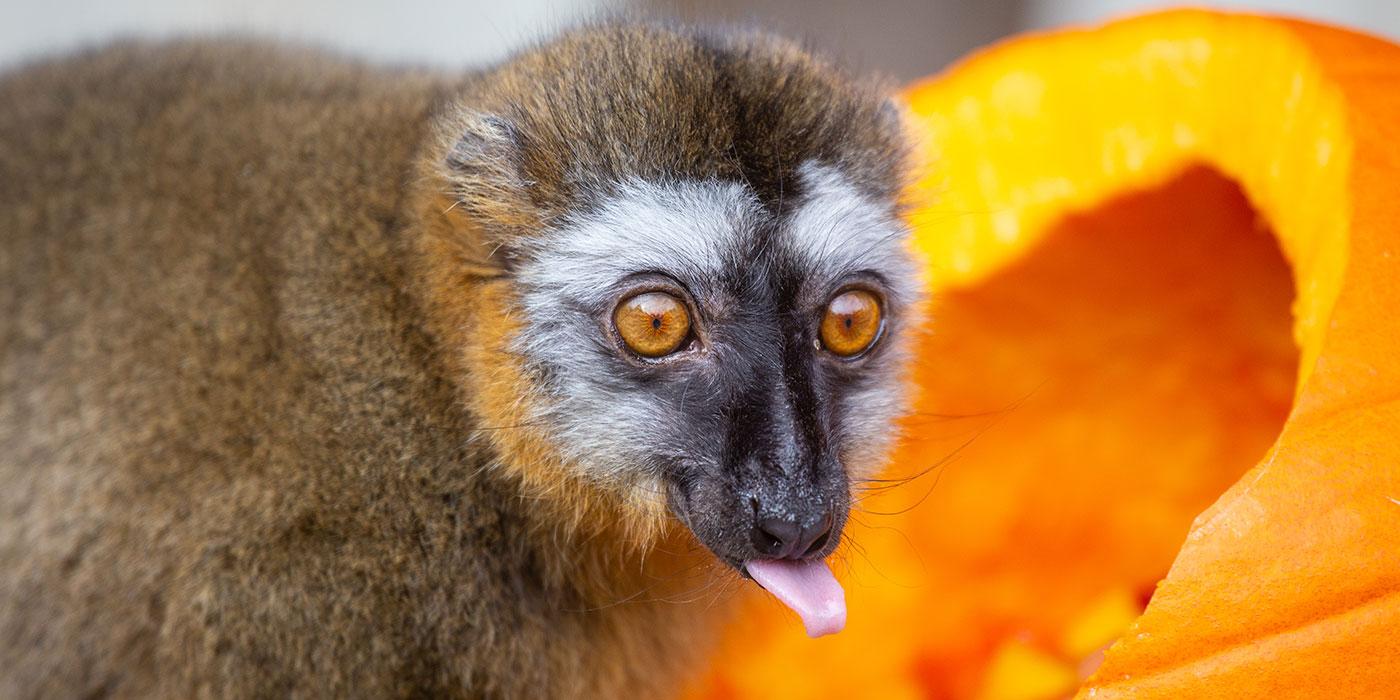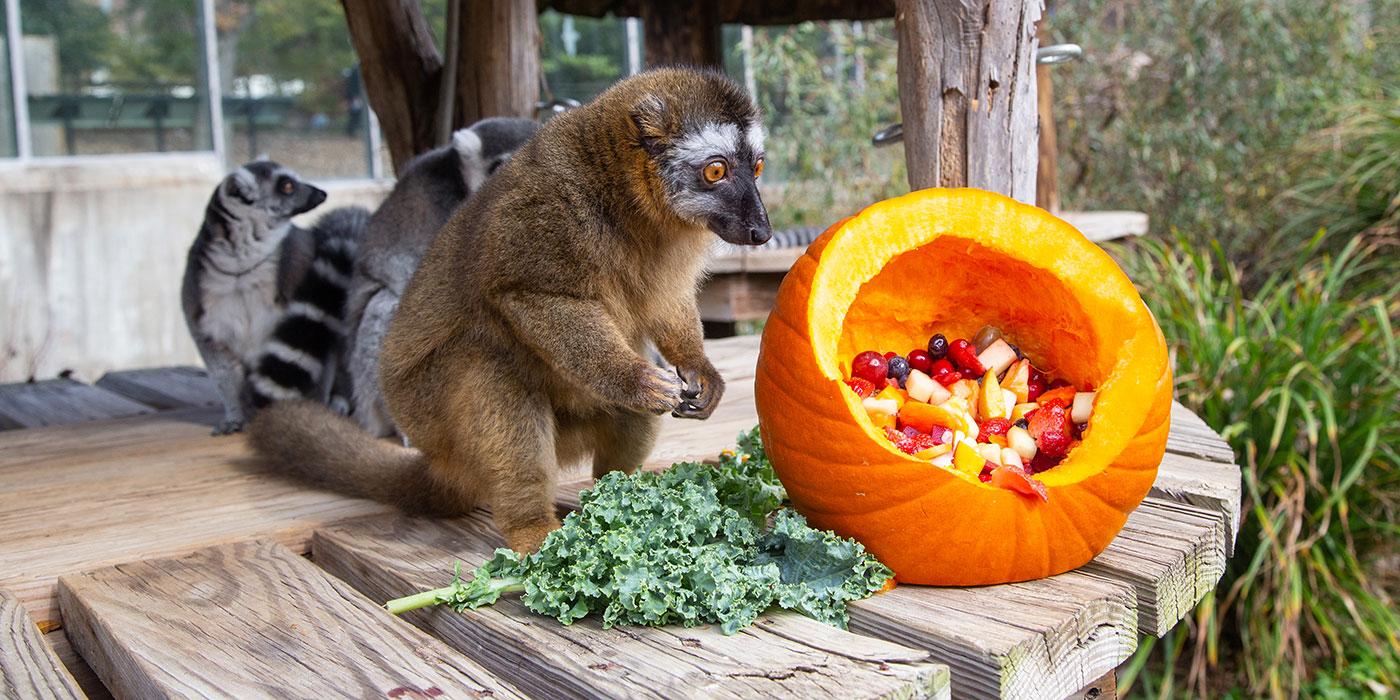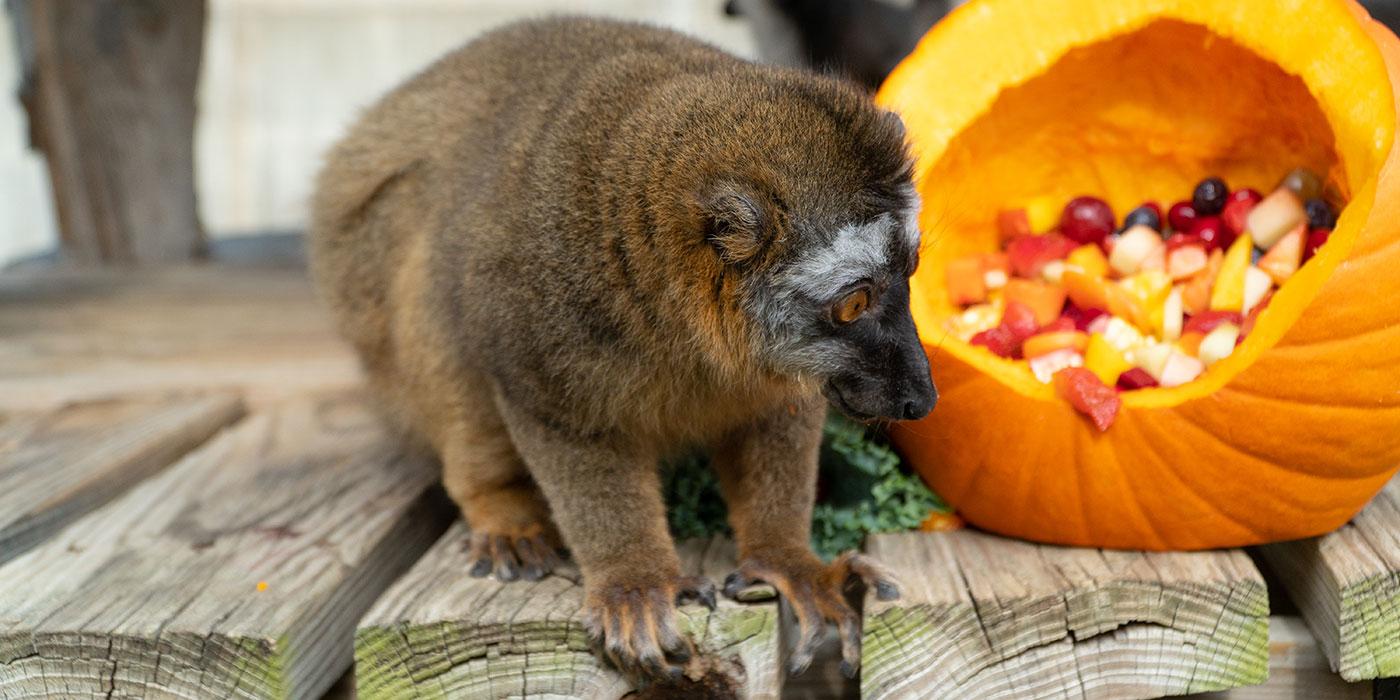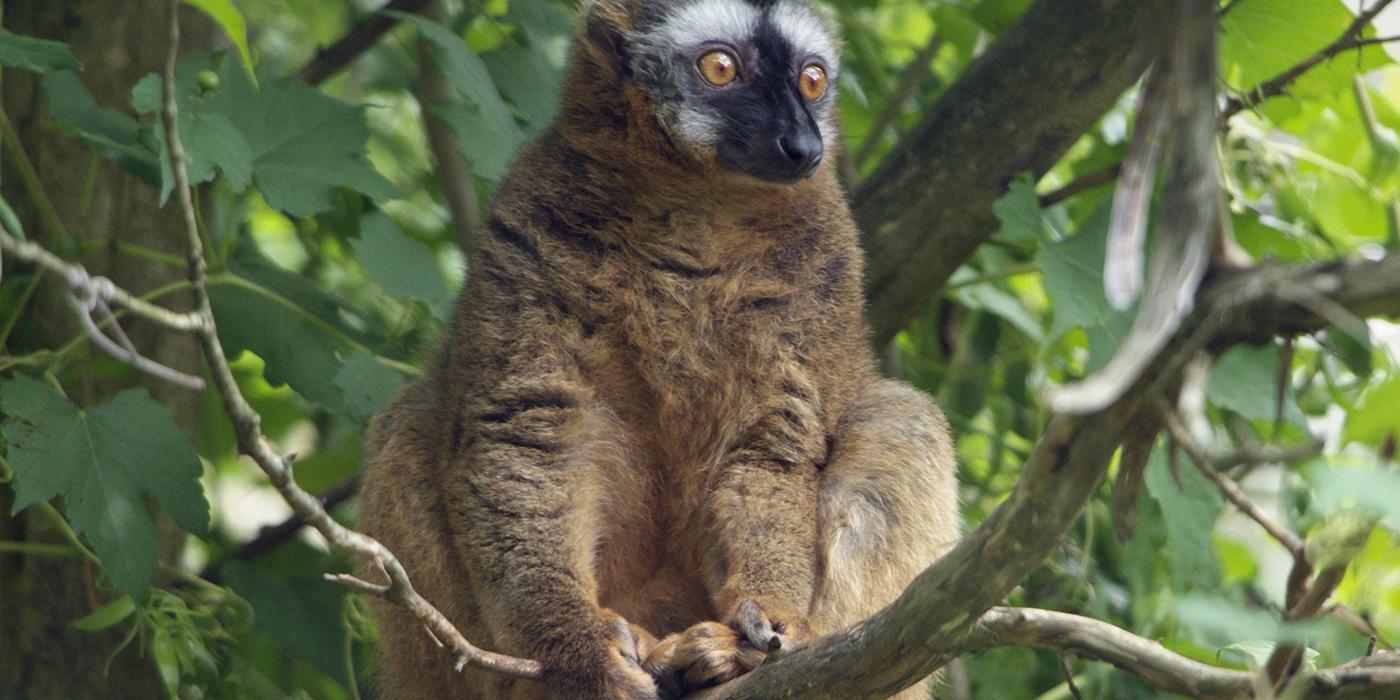Physical Description
Lemurs are the most endangered mammal group in the world and are native only to Madagascar. The red-fronted lemur is one of seven subspecies of brown lemur. These lemurs are sexually dichromatic, meaning that males and females have different fur patterns; males are gray to gray-brown and females are reddish brown. Both sexes have pale patches over their eyes, and males have a reddish crown. Red-fronted lemurs are arboreal and typically move through the forest canopy quadrupedally but can also leap. Their long tails are not prehensile, and they cannot hang from them.
Size
Red-fronted lemurs are about the size of a house cat and weigh between 4.5 and 8 pounds (2 to 4 kilograms). Their tails can measure as long as 22 inches (56 centimeters).
Native Habitat
Red-fronted lemurs live in deciduous forests in western and eastern Madagascar.
Lifespan
Red-fronted lemurs can live 20 to 25 years.
Communication
As with all true lemurs, olfactory communication is extraordinarily important. Red-fronted lemurs also have a few documented calls. The "ohn" is a nasal sound used to maintain group cohesion. The "cree" sound is a high-pitched territorial call. The "crou" sound is an alarm call that signals danger to other lemurs.
Food/Eating Habits
They are mainly folivorous, or leaf-eating, lemurs. They can also eat flowers, fruit and bark. However, red-fronted lemurs have very adaptable diets, shifting to invertebrates and fungi when plant matter is scarce. At the Smithsonian's National Zoo, they are fed a mixture of fruits, vegetables and leaf-eater biscuits multiple times a day.
Social Structure
These lemurs live in social groups of four to 18 individuals (with an average group size of seven to eight), including multiple males and females. They have a very small home range, usually less than 2.5 acres (0.01 square kilometers). Unlike many prosimians, red-fronted lemurs do not show marked female dominance.
Lemurs establish and reinforce social bonds within groups by grooming. Prosimians groom in a rather unique way. Most, including red-fronted lemurs, have six lower teeth that stick straight out from their jaw, forming a dental comb that the animals use to groom their own fur and that of other members of their social group.
Reproduction and Development
In the wild, female red-fronted lemurs give birth to one baby in the fall, after a gestation period of approximately four months. Infants cling to their mothers' bellies for the first three weeks, shifting only to nurse. At about three weeks old, the young lemurs begin spending time riding, jockey-style, on mom's back before taking their first tentative steps. Infants then begin to taste solid food, sampling bits of whatever the other members of their group are eating. Nursing continues but declines until the infant is weaned at approximately four to five months of age. Males have been known to assist the females with child rearing.
Conservation Efforts
Lemurs are the most endangered mammal group in the world. Twenty-three species of lemur are considered critically endangered, 52 are endangered and 11 are vulnerable, according to a 2013 report from the International Union for Conservation of Nature.
Forest destruction due to slash-and-burn agriculture, illegal logging and gathering fuelwood are the primary threats to the survival of red-fronted lemurs. They are also among the most commonly hunted lemur species in Madagascar. However, red-fronted lemurs are found in several protected areas in Madagascar and may be one of the more protected subspecies of brown lemur.
Since humans arrived on Madagascar about 2,000 years ago, roughly 80 percent of the total forest cover has been lost due to extraction of precious hardwoods, fuel wood and other products, as well as to clear land for agricultural and grazing lands. On the western side of the island, forests are being cleared for pasture, while in the east, the forests are burned for slash-and-burn agriculture and cut for charcoal production.
Malagasy people rely heavily on the land for their survival which has led to the over-exploitation of natural resources throughout the island, as impoverished people do whatever they can to feed their families. Illegal logging and agricultural fires also result in both habitat loss and fragmentation. Habitat fragmentation can lead to population isolation for lemurs, resulting in an unsustainable genetic pool. Lemurs are also hunted as food items and have an increasing presence in the illegal pet trade.
In July 2013, IUCN's Species Survival Commission (SSC) released a 185-page strategy to conserve Madagascar's lemurs. This report outlined a series of actions that needed to be taken in order to conserve lemurs and their habitat, which includes working with and training local communities, growing primate-centric ecotourism, maintaining and creating long-term research projects, and establishing and preserving a captive population of endangered lemurs.
Help this Species
- Reduce, reuse and recycle — in that order! Cut back on single-use goods, and find creative ways to reuse products at the end of their life cycle. Choose recycling over trash when possible.
- Be a smart consumer. Choose products made with sustainable ingredients, such as Smithsonian certified Bird Friendly coffees, which support farmers striving to limit their impact on wildlife and habitat.
- Practice ecotourism by being an advocate for the environment when you’re on vacation. During your travels, support, visit or volunteer with organizations that protect wildlife. Shop smart too! Avoid buying products made from animals, which could support poaching and the illegal wildlife trade.
- Share the story of this animal with others. Simply raising awareness about this species can contribute to its overall protection.
Animal News
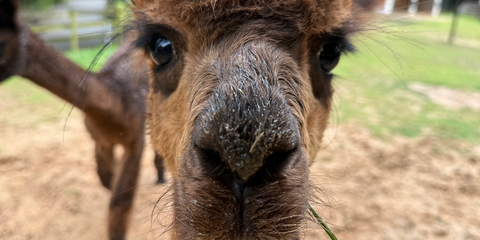
Zoo Welcomes Alpacas ‘Rainstorm’ and ‘Coffee Cup’
